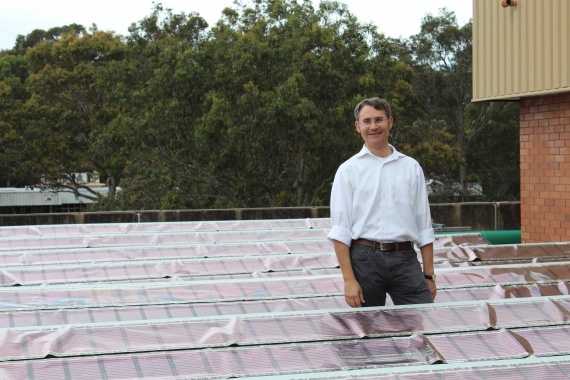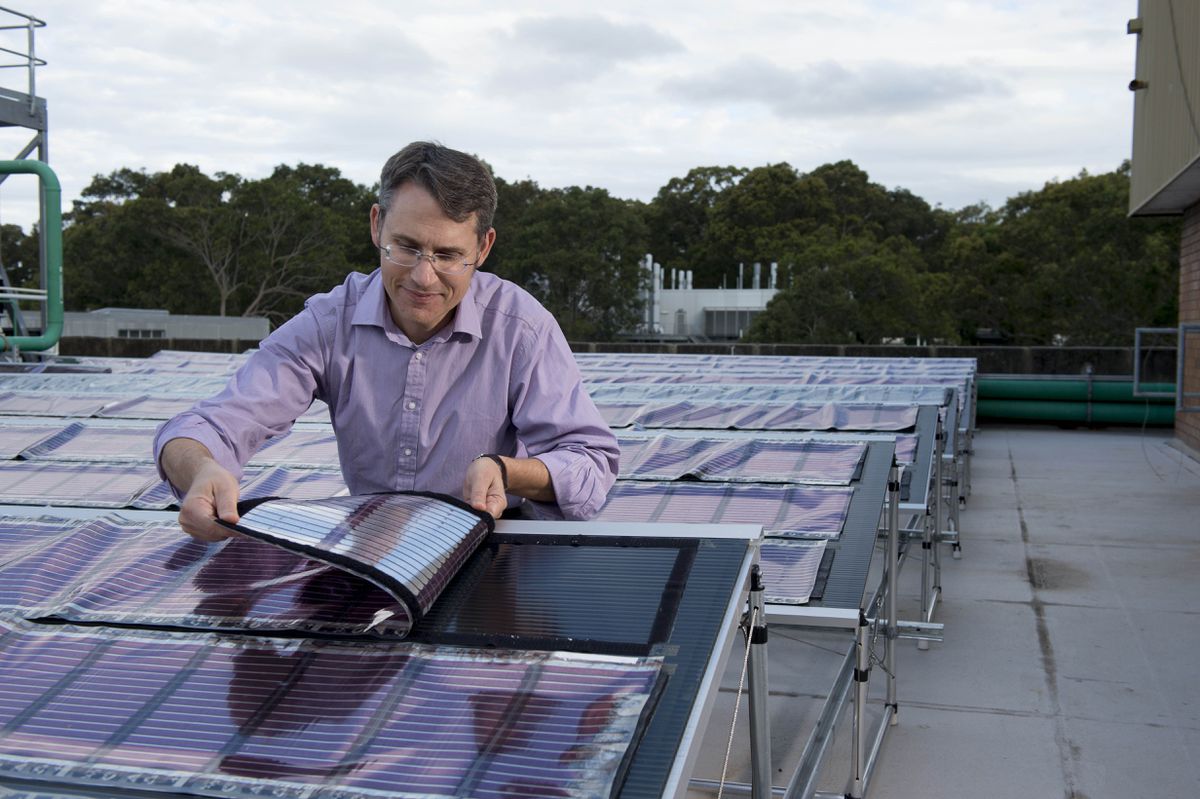Australian scientists have managed to create solar modules from plastic film. The process of their manufacture consists in applying special ink on a transparent plastic base. These photovoltaic modules have high flexibility and can be fixed on any basis, even the curve itself.
 The thickness of the plastic base for printing is less than 0.1 mm. The generation and transmission of electricity occurs by applying special electronic ink to a plastic sheet. Such panels can be made very quickly with an offset printing press. Moreover, the number of films will correspond to industrial volumes.
The thickness of the plastic base for printing is less than 0.1 mm. The generation and transmission of electricity occurs by applying special electronic ink to a plastic sheet. Such panels can be made very quickly with an offset printing press. Moreover, the number of films will correspond to industrial volumes.
Photovoltaic panels made of polyethylene film can be quickly brought to a working state, simply by unfolding on a designated area.
The price of a square meter of such a photovoltaic module is 7 dollars 42 cents. According to specialists, this cost is 30 times lower than that of a similar area of silicon modules. For example, modules for the “solar roof” from Tesla have a price of $ 235 per square meter. Innovative polyethylene panels are able to generate electricity even in low light conditions. This allows them to be placed in shaded areas or sent to the unlighted side.
Professor Paul Dastur and his colleagues for about 10 years worked on the invention of light photovoltaic modules, which are manufactured using roll printing technology. This method of creating modules is very similar to printing a traditional press. It should be noted that the University of Newcastle, in which Professor Paul Dastur works, is a leader in the field of studying and testing light photovoltaic modules.
 Printed panels are made of polyethylene. We are accustomed to see this material in the form of plastic dishes, especially bottles. Such panels can be made from recycled plastic waste. This will solve the problem with the recycling of plastic and expand the horizons of solar energy.
Printed panels are made of polyethylene. We are accustomed to see this material in the form of plastic dishes, especially bottles. Such panels can be made from recycled plastic waste. This will solve the problem with the recycling of plastic and expand the horizons of solar energy.
It should be noted that the printed panels are lightweight. One thousand square meters of printed panels will weigh approximately 100 kg. Due to this, they are easy to deliver to the final consumer in a short time. Professor Paul Dastour drew attention to the fact that this characteristic of his invention is capable of making panels an extremely important element of disaster relief. Disruptions to electricity in natural disasters can be easily solved with the help of printed panels without special additional costs for installation and transportation.
Often, in a disaster, people need energy. Most often it is produced using a diesel generator. Only here the problem lies in the supply of fuel for the generator. Printed panels in this issue are more functional and productive.
Scientists have begun to actively test their inventions. They intend to fix the productivity of printed panels on a plot of 100 square meters. The research site was deployed right on the roof of the university where the inventors work.
At the moment, applying a special electronic ink on a plastic surface is engaged in a small-sized printer. The device can create several hundred meters of panels per day. If you add an industrial printer to this process, you can create a solar coating for thousands of homes in one day.


